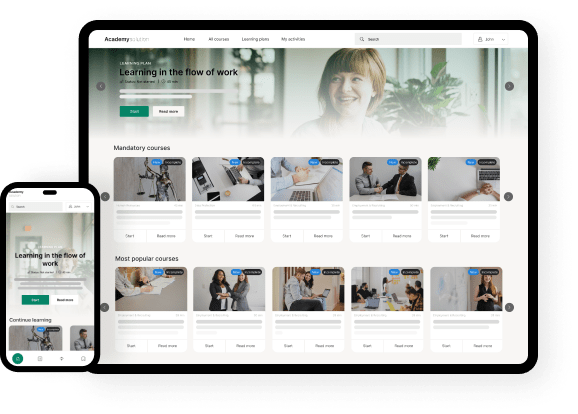Radical changes occurred in workplaces when the pandemic broke out back in 2020. These adjustments included companies shifting to a work-from-home setup. While remote working provided an immediate remedy to disrupted value chains, it left employees disengaged for most of the time. And this issue begs the question: what drives employee engagement when clarity and control are lacking?
In an article published in Forbes, Naz Beheshti, an executive wellness coach, speaker, Forbes contributor, author, and CEO, identified four critical areas that leaders need to focus on in order to provide constant support to their remote workers:
- Consistent, frequent, and transparent communication
- Support for employees’ wellbeing
- Keeping remote teams engaged and productive
- Being mindful of the paradox of work-life balance in a pandemic
According to Beheshti, good leadership plays a vital role in protecting the welfare of remote employees and driving engagement. However, having someone take lead might not be enough to help employees fully cope with remote working challenges.

Source: Gartner
So, it’s safe to say that our virtual offices aren’t likely to go any time soon. Organizations must therefore direct their efforts towards empowering their employees more – especially those who struggle in their new remote working environment.
As Beheshti expressed:
In a time when most of us have struggled with feelings of isolation and disconnection, the engagement of meaningful and rewarding work is as vital as ever.
What remote employees need now is to rediscover their sense of work satisfaction. Finding value and motivation in every little thing they do, will help ease the lack of emotional and physical proximity.
Drivers of employee engagement
Employee engagement is a solid emotional commitment driven by several factors. But regardless of the working conditions employees are given (remote or office-based), what drives engagement will remain the same.
Keeping this in mind, companies should leverage these engagement drivers to maintain the work experience quality. In the following, we’ll therefore highlight the top five drivers of employee engagement. We’ll contextualize these essential drivers and share the best practices to increase employee engagement – especially in today’s remote offices.
Autonomy
One can’t emphasize enough the vital role that intrinsic motivation plays in promoting engagement inside an organization. And when it comes to motivation, autonomy is one of its key factors.
Based on Daniel Pink’s concept of workplace motivation, autonomy is the need we have to direct our own life and work. And to be fully motivated, we should be able to decide for ourselves what we do and when we do it.
It’s autonomy that motivates us to think creatively without the need to conform to specific standards. Employee autonomy means that workers have control and discretion over their tasks and the way they’re delivered.
Yet, for autonomy to work in your company, you must trust your employees to fulfill their jobs. To do this, set goals properly and clarify expectations, and agree on specific deliverables. Give your employees the freedom to reach these goals at their own pace. And remember, never make them feel that your “virtual door” is closed for feedback or consultation.
Self-organization is always at the center of every work-from-home arrangement. And the more independent you allow your remote workers to be, the more valued they’ll feel. And when employees build up pride in what they do, the more likely they are to show engagement in their work.
Relationships
Remote workers can be exposed to various psychosocial risks such as isolation, increased risk of domestic violence, and the constant fear of losing one’s job.
These psychosocial hazards can increase both psychological and physiological health issues among your employees. When employees are taken aback due to these difficulties, their engagement consequently suffers.
Nevertheless, creating an environment where there are positive social relationships can help prevent this unpleasant scenario. Positive social connections or interactions can foster a creative, collaborative, and encouraging workplace culture.
Did You Know That…
According to Society for Human Resource Management, positive relationships with co-workers can foster a sense of loyalty, camaraderie, and moral support among staff members. These bonds then boost workers’ overall productivity, team cohesiveness, and, most importantly, employee engagement.
When promoting positive work relationships in a remote setup, the employer should begin by:
- Encouraging social interaction through different digital platforms
- Opening opportunities for collective decision-making (e.g., gathering feedback or sending out surveys)
- Respecting personal spaces by acknowledging working shifts, time zones, and even holidays
- Building trust by defining personal boundaries
In other words, improving employee engagement in a remote working environment is about removing barriers and offering opportunities.
Learning and development
Learning and development is a critical element in promoting employee engagement. When you give employees opportunities to grow and learn it fosters engagement. But training employees can be challenging. Especially if it’s done online. And if you don’t have a structured corporate training program to guide you, the task can seem even more complex.
Thus, having a learning academy to formalize training initiatives would help you streamline employees’ learning process and bring better results.
But if you’re not yet convinced that learning academies can help you and your organization in extreme circumstances such as a global pandemic, consider following these three simple tips:
Apply blended learning
Some think that training people virtually is only about using a learning management system and creating online training modules. While having an LMS is a popular training option, it’s not the only one that works.
Many companies now use blended learning, especially in their onboarding and compliance training. And success is most often evident when following both synchronous and asynchronous learning models. A blended approach creates an integrated learning environment where online and instructor-led training become complementary.
Choose the right online learning platform
If you understand your training needs and objectives, buying an LMS will prove good value. But remember there’s no such thing as a one-size-fits-all digital learning platform. Choosing the right platform means knowing your budget, specifying your required platform features, and finding a suitable LMS vendor.
Track and measure training progress
After countless hours of rolling out your online training activities, it’s imperative you remember to collect data and track progress. No investment or project is ever successful if there are no measured results to back the claim up. Evaluate the process; review its strengths and weaknesses to make the necessary improvements or revisions in the future.
Recognition and appreciation
Did you know that lack of recognition happens to be the number one reason why employees quit? While the harsh business world might think that employee recognition is just a cheesy HR concept, a study found that 66 % of employees would quit if they didn’t feel appreciated.
Lack of recognition and appreciation can lead to poor employee engagement. And the lower workplace engagement is, the higher turnover rates will be.
The mere fact that remote employees are trying their best to keep their A-game in the face of a pandemic already deserves recognition. Appreciating employees and providing them something to acknowledge their work is necessary – especially in unusual circumstances.
The physical separation caused by COVID-19 might deny remote workers the experience of authentic recognition from their peers and supervisors. But the truth is that it only takes a touch of creativity and a little help from technology to translate recognition in the virtual workplace.
To help you properly recognize remote employees, use these virtual engagement ideas:
- Create informal communication sessions or meetings
- Offer simple rewards to your employees
- Gamify your reward system by using a Learning Management System
- Design virtual bulletin boards for important dates and activities such as birthday celebrations
- Recognize your employees’ performance using your company’s social media platforms
- Give people free time
Employee recognition doesn’t have to be expensive or grandiose. It only needs to be a genuine expression of gratitude, trust, and acknowledgement.
Resources and tools
There’s an old saying that goes: “You’re only as good as the tools you use”.
So, forcing employees to continue their work at home takes away their momentum. And making them do their usual tasks outside their “zones” and without the proper resources will lead to poor performance.
It’s therefore critical for remote employees to receive the right tools once deployed in their respective remote offices. That is because employees working from home must be able to replicate the same core processes to get the same work result and value as they do in their office. These processes often include, but are not limited to:
- Staying in close communication with their teams
- Managing support tickets
- Reporting and analyzing essential data
- Identifying discrepancies
Fortunately, there are digital tools that you and your organization can utilize to set remote employees in place and keep their level of engagement high. They are:
- Collaboration apps (Microsoft Teams, Google Workspace)
- Cloud storage apps and services (Microsoft OneDrive, Google Drive)
- To-do list apps (Trello, Google Keep)
- Project management software
- Mind mapping tools (Coggle, Mindly, SimpleMind)
- Security tools and Two-factor authentication apps
- Online office suites (Office 365, G Suite)
Standalone apps may be a quick solution to a specific engagement issue. But in an unpredictable working environment such as the virtual office, unexpected challenges might still appear. With that in mind, your company needs complementary tools that can serve as a unified digital solution catering to your different needs.
An all-in-one solution to boost employee engagement
Cursum understands that each organization has its own approach to measure and optimize employee engagement. But we believe that the process of promoting engagement shouldn’t be viewed as separate parts but rather as a whole.
Whether it’s about providing remote employees with the right tools or recognizing their efforts, it all boils down to translating these actions into a single and highly usable digital platform. And that’s where we come in.
We do not only offer an all-in-one training solution to revolutionize your corporate training program. We’ll create for you an opportunity to help you upscale your business and capitalize on innovation. Contact us to learn how our modern technology can bring you a competitive advantage.


